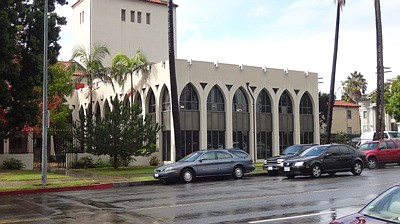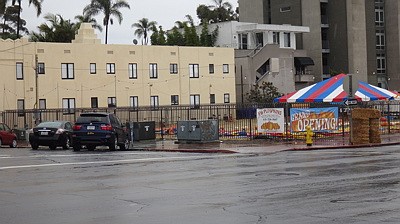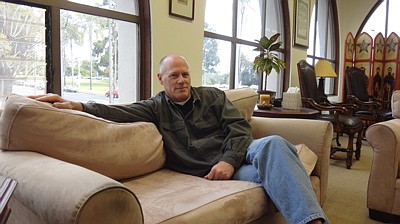 Facebook
Facebook
 X
X
 Instagram
Instagram
 TikTok
TikTok
 Youtube
Youtube
In a November 4 interview, the Very Reverend Scott Richardson, dean of St. Paul's Cathedral, said it appears their project to renovate the cathedral and construct two high-rise, mixed-use condominium towers is a done deal. At the San Diego City Council's November 8 session, Richardson expects approval to be a formality.
The Planning Committee previously approved the application on a 5-0 vote, and there was no opposition at that time. The Bankers Hill/Park West Community Association had previously expressed misgivings about the project, particularly the 180-foot-height of one tower; that tower will now be 158 feet high.
Richardson said the association's chair, Leo Wilson, now publicly supports their project. St. Paul's will also pay $1.5 million to the San Diego Housing Authority as an "in-lieu fee" rather than construct affordable housing units.
The project involves two land parcels adjacent to the cathedral, on Sixth Avenue, across from Balboa Park. The Park Chateau apartments at 2761 Fifth Avenue (at Olive Street) face demolition, along with the church's administration building. A vacant lot at 2665 Fifth Avenue (at Nutmeg Street) is the second site.



The modernistic towers will include 110 condominiums, retail space, and 20,000 square feet of cathedral office space and underground parking. A 15-story building with 65 condo units will be sited at the Olive Street location; at the Nutmeg site, a tower will be 13 stories with 45 units. Additions and renovations to the cathedral include two new bell towers.
The selected developers will pay “several million dollars” to St. Paul's, plus provide office and program space in return for owning the adjacent land. Developers would keep all profits from selling the luxury condos, Richardson said. The building plans include energy-efficient heating/cooling, appliances, and lighting. Richardson hopes for a start “in one year,” and expects construction to take two years. The funds paid by the developer will be used mostly “to do more to meet the needs of people and endow the ministry," not for administrative purposes, Richardson emphasized.
See the video for an idea of the changes to come.

In a November 4 interview, the Very Reverend Scott Richardson, dean of St. Paul's Cathedral, said it appears their project to renovate the cathedral and construct two high-rise, mixed-use condominium towers is a done deal. At the San Diego City Council's November 8 session, Richardson expects approval to be a formality.
The Planning Committee previously approved the application on a 5-0 vote, and there was no opposition at that time. The Bankers Hill/Park West Community Association had previously expressed misgivings about the project, particularly the 180-foot-height of one tower; that tower will now be 158 feet high.
Richardson said the association's chair, Leo Wilson, now publicly supports their project. St. Paul's will also pay $1.5 million to the San Diego Housing Authority as an "in-lieu fee" rather than construct affordable housing units.
The project involves two land parcels adjacent to the cathedral, on Sixth Avenue, across from Balboa Park. The Park Chateau apartments at 2761 Fifth Avenue (at Olive Street) face demolition, along with the church's administration building. A vacant lot at 2665 Fifth Avenue (at Nutmeg Street) is the second site.



The modernistic towers will include 110 condominiums, retail space, and 20,000 square feet of cathedral office space and underground parking. A 15-story building with 65 condo units will be sited at the Olive Street location; at the Nutmeg site, a tower will be 13 stories with 45 units. Additions and renovations to the cathedral include two new bell towers.
The selected developers will pay “several million dollars” to St. Paul's, plus provide office and program space in return for owning the adjacent land. Developers would keep all profits from selling the luxury condos, Richardson said. The building plans include energy-efficient heating/cooling, appliances, and lighting. Richardson hopes for a start “in one year,” and expects construction to take two years. The funds paid by the developer will be used mostly “to do more to meet the needs of people and endow the ministry," not for administrative purposes, Richardson emphasized.
See the video for an idea of the changes to come.